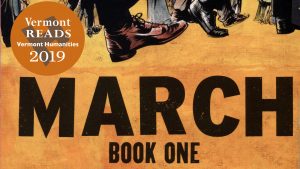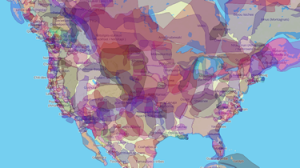
Post by Scott Hertzberg, Reference Librarian
The Social Science Research Network (SSRN) contains more than 888,000 open access, law, economics and other social science papers posted by more than 425,000 scholars (SSRN, Retrieved October 1, 2019). The majority of the articles are “pre-print” articles that have been accepted for eventual publication by established peer-reviewed journals. A very small number of the papers are not peer-reviewed, but to be safe Castleton faculty and librarians should instruct students to check that a specific SSRN paper indicates it has passed a peer review.
The Rochester-based non-profit company that started SSRN in 1994 sold the website to Elsevier in May of 2016 (Van Noordan, 2016). Elsevier has so far abided by a pledge made after the acquisition to continue to keep the papers open access (PIKE, 2016). An article in Information Today suggests that the publisher will continue to do so, and that their real interest is the data produced by SSRN users (Van Noordan, 2016). A Nature article on the acquisition quotes an analyst who called it a “well thought out” strategy to “create deeper relationships with researchers and become more and more essential to researchers even as librarians become less so” (PIKE, 2016). Regardless of ownership, SSRN is a major open access network for scholarly communication in the social sciences.
For more information on Open Access and Open Educational Resources, see the library’s guide:
Open Educational Resources (OER)
Bibliography
Crozier, H. (2018). Promoting Open Access and Open Educational Resources to Faculty. Serials Librarian, 74(1–4), 145–150. Retrieved from https://www.tandfonline.com/doi/full/10.1080/0361526X.2018.1428470.
Pike, G. H. (2016). Elsevier Buys SSRN: What It Means for Scholarly Publication. Information Today, 33(6), 1–29. Retrieved from http://www.infotoday.com/it/jul16/Pike–Elsevier-Buys-SSRN–What-It-Means-for-Scholarly-Publication.shtml.
Salem, J. (2017). Open Pathways to Student Success: Academic Library Partnerships for Open Educational Resource and Affordable Course Content Creation and Adoption. Journal of Academic Librarianship, 43(1), 34–38. Retrieved from https://www-sciencedirect-com.castleton.idm.oclc.org/science/article/pii/S0099133316301409.
Sheret, L., & Harper, L. (2018, July 20). “The Benefits of Open Educational Resources (OERs) for Faculty and Students. Retrieved from https://mds.marshall.edu/lib_faculty/62/.
Thompson, S., Cross, W., Rigling, L., & Vickery, J. (2017). Data-informed open education advocacy: A new approach to saving students money and backaches. Journal of Access Services, 14(3). Retrieved from https://www.tandfonline.com/doi/abs/10.1080/15367967.2017.1333911.
Van Noordan. (2016). Social-sciences preprint server snapped up by publishing giant Elsevier : Nature News & Comment. Nature. Retrieved from https://www.nature.com/news/social-sciences-preprint-server-snapped-up-by-publishing-giant-elsevier-1.19932
Xia, J. (2019). A Preliminary Study of Alternative Open Access Journal Indexes | SpringerLink. Publishing Research Quarterly, 35(2), 274–284.
Yeates, S. (2017). After Beall’s “List of predatory publishers”: problems with the list and paths forward. Information Research, 22(4), 1–6. Retrieved from http://www.informationr.net/ir/22-4/rails/rails1611.html.




